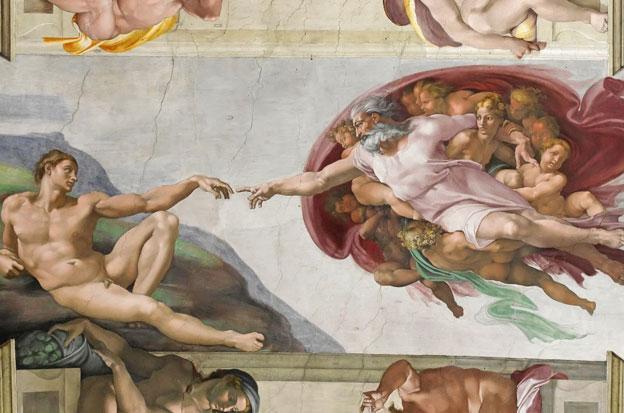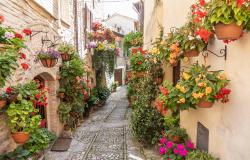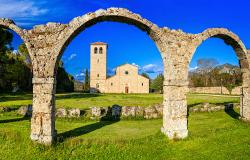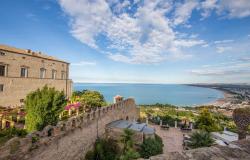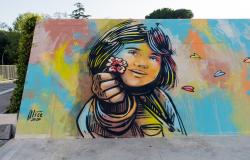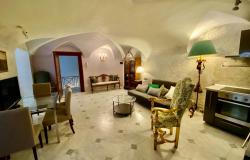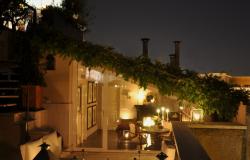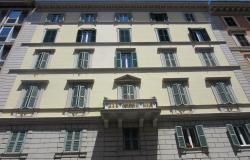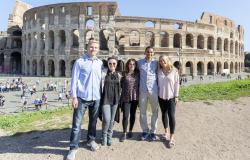“Unique.” “Divine.” “Terrible.” These words have all been used to describe Michelangelo Buonarroti. The word “phenomenal” would complete the description.
Beginnings
The artist, sculptor and poet was born on 6th March 1475 to Lodovico di Leonardo di Buonarrota Simoni in Caprese (Arezzo), a village in the Apennine mountains in Tuscany. He was handed over to a wet nurse as an infant, and one could wonder about fate's hand in that as both her husband and her father were stonecutters. By the age of thirteen he had a strong desire to be an artist but his family opposed this. His friend Granacci encouraged him to take a place as an apprentice with the Ghirlandaio brothers at their workshop in Florence. Here he learned the art of drawing in the style of the old masters. He also acquired a permanent disfigurement when a fellow student broke his nose in retaliation for Michelangelo's taunting. His desire to be a sculptor became stronger and he was noticed by Lorenzo the Magnificent who took him in to live at the palace in Via Larga and treated him like a son. The Medici garden became like a school for Michelangelo and it was inspiring to him as Lorenzo had adorned it with statues. In 1492, Lorenzo de' Medici died and Michelangelo was free to explore his own artistic direction.
Recognition
The Vatican Pietà was created in 1496 (St. Peter’s Basilica, Vatican City) and expresses the subject of the divine concept which Michelangelo returned to time and again in his art. At the age of 24, he was famous. He spent the next four years in Florence developing technical mastery in his art forms. Michelangelo was prolific during the period 1501 to 1508. Some of the works produced during this time were the famous David in marble, representing the hero in youth; The Virgin and Child (Pille Tondo) (housed at Bargello, Florence), The Bruges Madonna, and The Holy family or Tondo Doni (tempera on wood panel, Uffizi, Florence - pictured below).

Commissioned by Popes
In 1505, Julius II summoned Michelangelo to Rome to build his tomb. Michelangelo designed it on three levels with 40 statues all mourning the death of the pontiff. The project was to be completed within five years, however it was only finished 40 years later by other artists and was not as grand as the original design. Michelangelo had to endure repercussions for years to come from heirs of the pontiff, because the work had not been completed.
The Sistine Chapel, 1508 to 1512
Julius II also commissioned him to paint the ceiling of the Sistine Chapel. This was a massive task and took Michelangelo four years to complete. Over 1300 figures and 1,000 square metres of ceiling made it a daunting project. Working in uncomfortable conditions, cramped and often alone, it caused him to become reclusive and also affected his health, body and mind. He complained about his eyesight and about being contorted. The work, though, was fantastic, and his intense and conflictual relationship with religion is evident. The biblical fresco was saturated with originality. After all, Michelangelo was competing with the great masters of the 15th century, and he was aware of his genius, so much so that he burnt many of his working sketches so that nobody would see his efforts, only the completed work. His interpretation of biblical events was often at odds with traditional views, yet his intellectual approach and his idealistic mind had to be admired. In 1513, when Giovanni de' Medici, the brother of Lorenzo the Magnificent, was elected to the papacy as Leo X, he gave Michelangelo the title of 'Palatine Count'. Over the next few years, Michelangelo spent long spells in the Apennines to quarry marble and bought a house in Florence. Pope Leo X commissioned him to build a funerary chapel for the Medici.

Changes and influence
By 1520, so much was changing in Florence and Rome. Pope Clement VII (Giullio de' Medici) was held prisoner during the Sack of Rome, but managed to escape. Two years later, Michelangelo fled Florence with his possessions fearing they would be taken for the war, and the governor Valori had even ordered his assassination because of his political views. Later that year, he resumed work on the Medici Chapel in San Lorenzo. The Virgin and Child rests here.
He made a lifelong friend, Tommaso dei Cavalieri, who encouraged him to live in Rome. After the death of Pope Clement VII, the new Pope, Paul III, commissioned Michelangelo to paint the Last Judgment for the Sistine Chapel. Michelangelo was now 60. Pope Paul III had great respect for Michelangelo and admired him greatly. There was much criticism and scandal surrounding the nudity of the figures in the Last Judgment, but Pope Paul was not swayed in his admiration. However, the nude figures were later 'clothed' by other artists. In his last years, Michelangelo worked on projects for Pope Paul III, and later for Pope Pius IV, who commissioned many projects, including the design for the Basilica of St Peter’s.
Vittoria Colonna, the Marquess of Pescara, had a profound influence on Michelangelo. She had helped him with his faith and he dedicated many poems to her. “Art, talent, memory, with all their scope, can never pay you back what you have given. At this, a thousand tries would always fail.”
Fragility
The last major works Michelangelo undertook were the Crucifixion of St Peter and The Conversion of St Paul. His health was failing and though he still worked on his art, it was increasingly difficult for him. Michelangelo died in 1564, age 89. His body was taken to Florence as he wished.

Immortality
Michelangelo's works transcend the normal expectations of lifetime accomplishments. Everything he created seemed to reflect the release and freedom of that which has been hidden. He dedicated his life to revealing the inner story - just a look at the sculptures Dying slave and Rebellious slave (Louvre, Paris), even the unfinished works Day, Night, Dawn, Dusk (Medici Chapel in the area of the tomb of Lorenzo de' Medici) we can see the perfection of softness in stone.
In a poem to Giorgio Vasari he wrote: “Already now my life has run its course. And, like a fragile boat on a rough sea, I reach the place where everyone must cross, and give account of life's activity.” He was so much more than an artist, sculptor and poet. “Unique” he was, “terrible” he may have been, to those with less understanding, but when one asks the question, was he “divine”?, there is only one answer. Absolutely. Italy's divine treasure and a treasure to all humanity.
